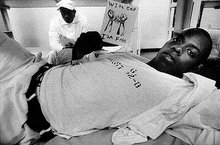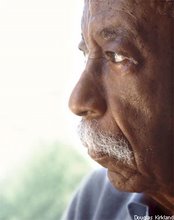 One in three breast cancers detected by mammograms would never have posed a threat to the patient's life, making all the treatments that follow unnecessary, according to a study conducted by researchers from the Nordic Cochrane Center in Copenhagen, Denmark, and published in the British Medical Journal.
One in three breast cancers detected by mammograms would never have posed a threat to the patient's life, making all the treatments that follow unnecessary, according to a study conducted by researchers from the Nordic Cochrane Center in Copenhagen, Denmark, and published in the British Medical Journal."The question is no longer whether overdiagnosis occurs, but how should we react to it," said H. Gilbert Welch of the Dartmouth Institute for Health Policy and Clinical Practice, author of an accompanying editorial. "It's not an imperative to be screened; in fact, it's a close call."














































































































4 comments:
DV,
Who got who surrounded? :)
Square this:
MSM-Reuters baby!
Cholesterol drug side effects need watching: study
(Reuters) - People using cholesterol-lowering statins have a higher risks of liver dysfunction, kidney failure, muscle weakness and cataracts and such side effects of the drug should be closely tracked, doctors said on Friday.
HEALTH
In a study covering more than 2 million people in Britain, researchers from Nottingham University found that adverse side effects of statins, which are prescribed to people with high levels cholesterol to cut the risk of heart disease, were generally worst in the first year of treatment.
The findings, published in the British Medical Journal, are unlikely to affect the use of best-selling medicines like Pfizer's Lipitor and AstraZeneca's Crestor, but the study's authors said patients taking statins should be "proactively monitored" for side effects.
Click here
The Technos going be running for the hills real soon.
Enjoy!
From the vitamin salesman.:)
Click here
Dr. Golomb is one of those rare commodities. She has earned an MD and a PhD and, is an associate professor of medicine, and associate professor of family and preventive medicine at the University of California at San Diego. But she is a rare commodity because she has integrity, and has not sold out to the drug companies while most other researchers have.
"I was initially perplexed by the disparities I saw between the published evidence, review papers, guidelines, and follow-up papers after trials were published," she explains, when asked how she became interested in the topic of Big Pharma distorting scientific evidence.
She had been researching statins (cholesterol lowering drugs), and she was perplexed by how people could come to the conclusions they were coming to, based on the data. "I would ask my colleagues, how could they have read this paper and come to this conclusion?"
Over time, as she began examining the evidence relating to conflict of interest and published results, she discovered there were forces at play that lead to disparities between:
* the evidence that was published, relative to the "truth" of that evidence, and
* the secondary representations of that evidence and the evidence that was published originally
"There is actually widespread evidence, even within the medical literature, showing that these forces can lead to qualitative differences in the conclusions relative to the fact," Golomb says.
I recently had to compare two papers for college. Both were funded by the manufacturer but one was good research and the other was bad. Only by reading the detail and understanding differences in design quality could valid conclusions be drawn. Indication that I was onto something came in the time it took the bad research to find a journal that would publish it compared with the good research.
Mammogram this!
Click here
Post a Comment